Chaos Three Acts - Decoding Aran's Encryption, Sampling, and Calculation Mysteries
arts. Soybean puree (FAB DAO)
Taiwanese artist Aluan Wang (also known as Ileivoivm in the crypto art world) released Chaos Culture, the third installment of the Chaos series at Art Basel HK this week. The last chapter in the series. Chaos is a series of generative art that is mounted on NFT. Chaos Culture is loaded in a circular frame like a petri dish with rich colors and diverse compositions. As long as the collectors who come to the site in Hong Kong can collect it for free.
Among the most intriguing are the secrets that Chaos Culture's narrative suggests. Aluan, an artist who rarely talks about his work, reveals many clues rarely, Culture is the treasure map of Chaos series, attracting audiences and collectors to unlock the code of Chaos series. Chaos Culture describes it this way: "Chaos research, chaotic memory, and chaotic culture have a relationship of regeneration and iteration. The latter produces new works from the remnants of the former." (Research > Memory > Culture, with each work re-growing through the remnants of the previous work, depending on its image) this is an opportune opportunity to explore, as a collector, the secrets that Aran has not told.
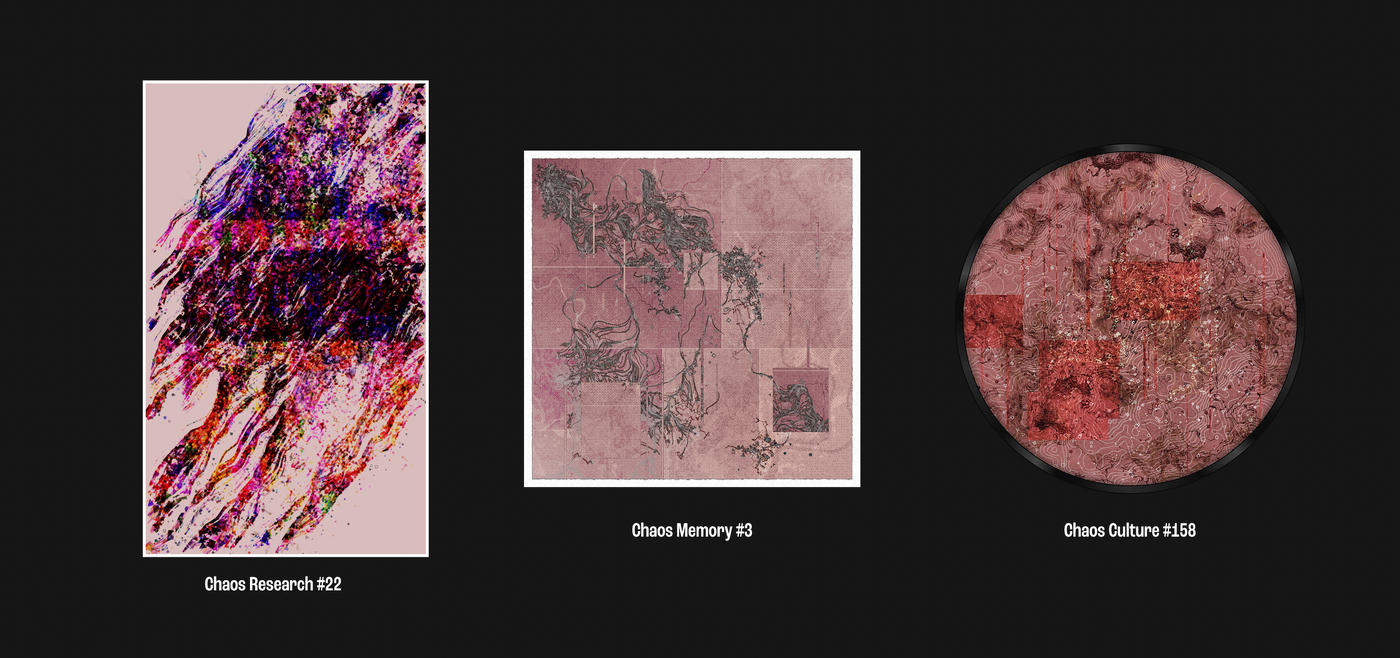
After all, this is the era of encrypted art. Crypto Art itself is not only a digital art market through the medium of non-fungible tokens (NFT) (Medium), but also "encrypted art" (Encrypted Art) an important issue. In the field of generative art, as "Controlled randomness" is gradually accepted by collectors, generative art (also known as computational art, derivative art) generated by collection codes and specific seed codes has become encrypted in the past two years. A mainstream branch in the art field (the other mainstream is the profile picture type trend market).
For the generative art using code as the medium, encryption and decryption, sampling and encoding are quite suitable tools. Therefore, the art of encryption, which has a unique position in the encryption art market, may also be discussed more widely in the next few years. Just like Kevin Abosch's encrypted character works in recent years, such as Hexadecimal Testimony (2020) and 1111 (2021), the colorful encrypted (Cryptographic) information is splendidly arranged and displayed, which is like a riddle The political and social intentions of Wang Aran's works also hint at various secrets through unusual curves, signals, and sounds.
The following are observations from correspondence and personal research with Wang Aran, summarizing and exploring the hidden information behind Chaos, like an encrypted version of Marco Polo's travels. I have personally collected encrypted art for nearly a year. I have been addicted to generative art works in the past six months. I am not a programmer in essence. God knows how many secrets Aran has hidden in it, and it still needs to be discovered by more professional collectors.
First of all, let's start with Good Vibrations (hereinafter referred to as GV) published by Wang Aran on Artblocks last year, because I always feel that the border of Chaos Culture is derived from GV.
Last August, Pristante, a surrealist doctoral researcher, wrote a string of threads on Twitter saying that GV and Wang Aran may be the next big thing. He believes that Wang Aran's works combine the geometric abstraction of the West with the social and political reality of the East in the early 20th century through the sound and vision created by generative art. This may be the first article discussing Wang Ahran's "encrypted creation" in English.
Indeed, Wang Aran made the second act of GV. He airdropped the B-side of GV to all GV owners. Each B-side corresponds to the sound and visual logic behind GV, which can be regarded as a spectrum. , a menu. Wang Aran once said that all his works are three-act plays, such a concept can be verified from his works in the period of Audiovisual Artist, such as Resonance in Moving ( Transonic , 2012) and Moving Center ( Moving Center) Resonance , 2011), if the B-side is the second act, the final act in the future may continue to be derived from the information implied by the B-side.

But the next big thing that Pristante said did not come at that time. Today, after nine months, I think the Chaos series is more suitable as the next big thing. This is a complete three-act drama, spanning the evolution of NFT encryption art, A history of personal creation and the application of tools for generative art. Before that, let's sort out the history of encryption and decryption of Wang Aran's works.
When Wang Ahran was interviewed in the past, he once said, "Algorithms remodel history, and point clouds subvert traditional thinking." (Algorithms are used to remodel history and point cloud to subvert conventional thinking.') This sentence may be Wang Ahran The core spirit of the creative context. Even the address Ileivoivm of Wang Aran's works is encrypted from Aluan Wang characters. This string of names that look like garbled characters is encrypted by the Enigma cipher machine.
Before publishing GV, Wang Aran had published many works about encryption and social intentions on the Tezos blockchain, the most famous of which was GeoPunk , which was exhibited at the Contemporary Art Museum (MoCA) in Taiwan a few months ago. )display. GeoPunk is an extra part of the three-act drama Path to the Past, Path to the Future, and Path to the End (for the Path series, please refer to Exploring the Space-Time Boundaries of Flowing Memory: Interview with Wang Xinren about his view of exotic space , Chen Peiyu 2019), you From this article, you can learn about Wang Aran's works and creative ideas in the pre-NFT period, and the Path series is also a series of Wang Aran's early NFT casting works, published on the HicEtNunc platform).

GeoPunk is a series of encrypted digital landscapes, whose voice and work description are Morse code, and its content points to a specific world GPS location, and only the NFT owner can decode the content. But if you use another way to open the code behind GeoPunk from the data stored behind the NFT, you can see 159 address IDs, including Beijing, China, Taiwan, the United States, the United Kingdom, Canada, etc. Those who are interested can click google one by one. In the list of places, you may see some hints of Wang Ahran's geopolitics and religion.
In his interviewed articles in the Path series, Wang Aran said that Atlas des géographes dʼOrbæ (Atlas des géographes dʼOrbæ) is an important love book for him and has a profound impact on his creation. I myself loved these three books on topography (yes, Ohebe is also a three-act play of some kind) and read them from childhood to adulthood. This book turns 26 English letters into 26 maps and 26 fictional exotic stories. In fact, Wang Aran's works also hide many fictional contexts.
Therefore, we can find that before the Chaos series, Aran made great efforts in the form of encryption and decryption. Personally, I think the Chaos series is the culmination of the entire creative context. In the Chinese world, Chaos has the same meaning as A-Luan's Luan (chaos), so this work is likely to be a career masterpiece in terms of naming. Chaos includes the encryption of NFT art development, the encryption of Wang Aran's personal experience, and the encryption of images and meanings.
The Chaos series is a three-act play that includes Chaos Research , Chaos Memory , and Chaos Culture , all of which are generative art creations. The three works will be published in December 2021, April and May 2022. This series is published on fxhash, an emerging generative art platform on the Tezos blockchain. The Chaos series is just in sync with the development history of fxhash. When Chaos Research was published, fxhash had only been established for less than a month; and when Chaos Culture was published, fxhash had already been published. In cooperation with Art Basel, eight outstanding artists exhibited in the special exhibition area, one of which was Chaos Culture by Wang Aran.
These three works are the epitome of the development history of Aran, starting from Chaos Research. Aran said that Chaos Research is actually a resistance to Perlin Noise. Perlin Noise is a noise generation algorithm. In a large number of generative works of art, it is used in seemingly randomly generated compositions to stack relatively complex visual forms. For example, the very well-known Artblocks work Fidenza is a good example. . Perlin Noise can be said to dominate the entire visual configuration of generative art. (For more on Perlin noise and Flow Fields, see Fidenza artistTyler Hobbs' article )
If you look closely at Chaos Research, you will see that its flow is very special, whether it is dynamic changes or the final plot. Looking down the code, you will find that he not only uses Perlin Noise to generate a flow field (flow field) to fill the entire screen, but also adds an ingenious new method, that is, on the basis of Perlin noise, plus mysterious signals. And these signals actually originated from Aran's NFT art collection. How exactly is this done?
Wang Ahran made post-production and sampling from the NFTs he collected in the Tezos blockchain in the past year. We can find the publicly hosted IPFS files (a peer-to-peer decentralized storage system) from Chaos Research's code, from which we can Discover morphed versions of collectibles. These works become the basis for Chaos Research's dynamic changes, particles, colors, and shapes. Therefore, I went back and commented afterwards. Chaos Research can be said to be the work of Aran's collection. It may be that I am not capable enough to restore which artist's work Research is derived from.
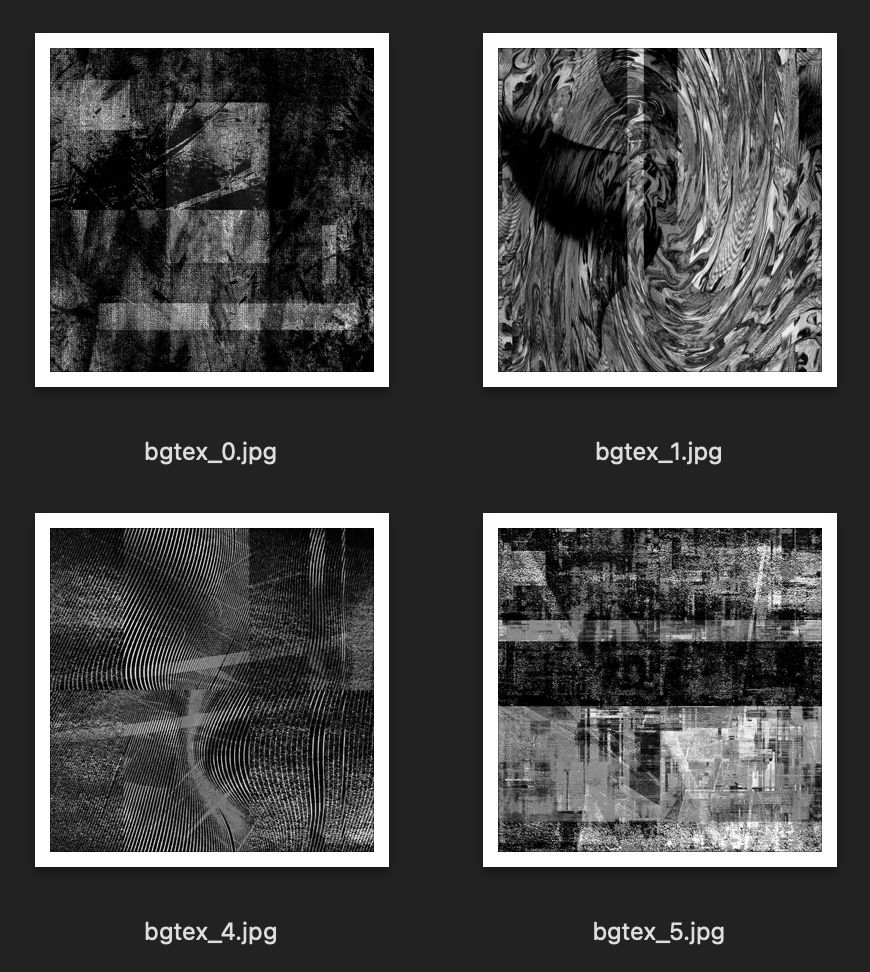
Wang Aran, a former audio-visual artist, believes that noise is the mother of sound. In theory, Fourier analysis can be used to analyze any sound and music into the simplest sine wave. If you look at it from the perspective of encryption art, sampling and extraction are essentially not far from encryption and decryption. "Sampling" decomposes original objects into new works. Everything has vibes, and all sensory experiences are composed of signals; passwords use algorithms to derive original objects into "unrecognizable" terminal works. Why do humans need Unidentifiable items for many reasons, including political, social relations, and financial transactions. Therefore, Chaos Research, as a work of generative art, implies challenging the mainstream signal (the flow field is not only one way), implies how the message is conveyed (a creation cannot be separated from the creation of other artists), implies who can watch (those who have the ability can crawl and comb) hidden message behind). This is natural in the blockchain space where permissionless and trustless are the essence.
Chaos Research is a kind of "self-sampling" and a kind of "self-encryption". What is self? It is Aran's personal collection of encrypted art, which becomes food, and eventually becomes Aran's creation of encrypted art, presenting a new type of chaotic space.

Four months later, Wang Aran published his second work, Chaos Memory, which has more fuller colors and configurations, and has more intriguing secrets.
First of all, there is an encrypted palindrome (ILEIVOIVM) in the text description, and it is written that "The cause comes before the effect. That's the era we have seen." (The cause comes before the effect. That's just the way we saw the time.) The text is just that, and does not explain the operation and viewing methods, and you can only see more changes by mistakenly pressing it. If you click on the works page and accidentally press the Q, W, E, R buttons, the Memory will appear in different shapes, including rectangles, squares, and circles. In response to this discovery, some collectors once questioned Aran. Aran only said that a single scale and perspective cannot fully present the appearance of Memory, and the complete appearance cannot be covered by a thumbnail.
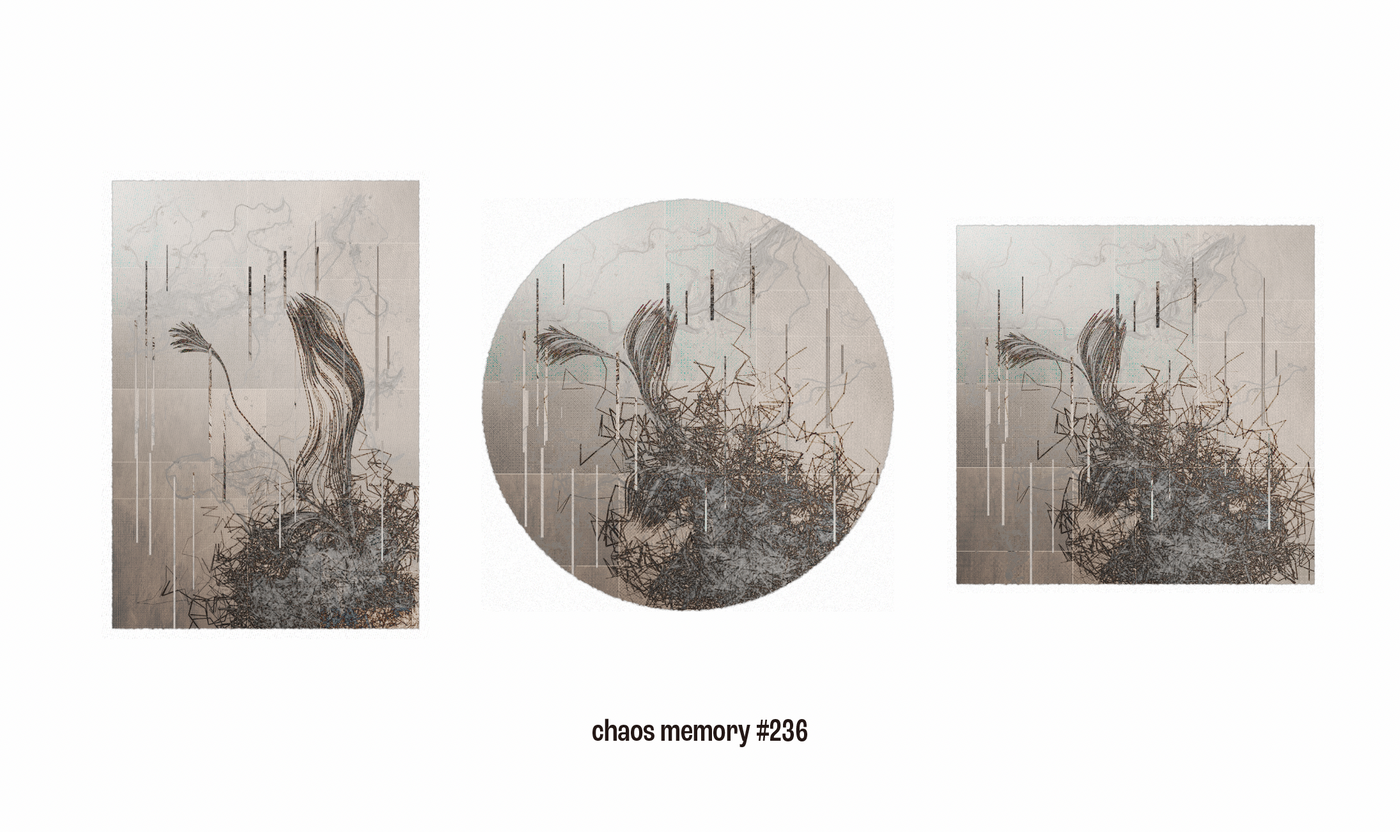
Also, if you dig a little deeper and find the archives hosted in IPFS, you'll find quite a few surprises. There are a batch of local texture pictures that look like traditional paintings, which are bitmap files, as well as picture files like Chaos Research, and even Chaos Memory works themselves. Is this a kind of self-recursion? (It is still the pincer offensive in the palindrome movie Tianneng). It turns out that this is the second sampling and compression process. Chaos Memory is a derivative work of Chaos Research. In the Chinese world, generative art is also called derivative art. Aran's work may try to deal with the puns generated by this translation. As for the bitmap file? I asked Aran, and it turned out that these pictures were part of the works of the 19th-century British romantic landscape painter William Turner.

Wang Ahran, who graduated from the art department, first wanted to become a watercolor painter, and Turner was the object that Ahran pursued all his life. Only then did he move towards the creative route of digital art, audio-visual art, and generative art. In the photo, you can see Aran's watercolor sketch of a workshop on open source tools in Zurich. Watercolor painting has a place in Wang Aran's aesthetic development, including the treatment of texture, texture, and material, so a softer gradient change can be observed from Chaos Memory, which may originate from Turner's clouds, light and waves.
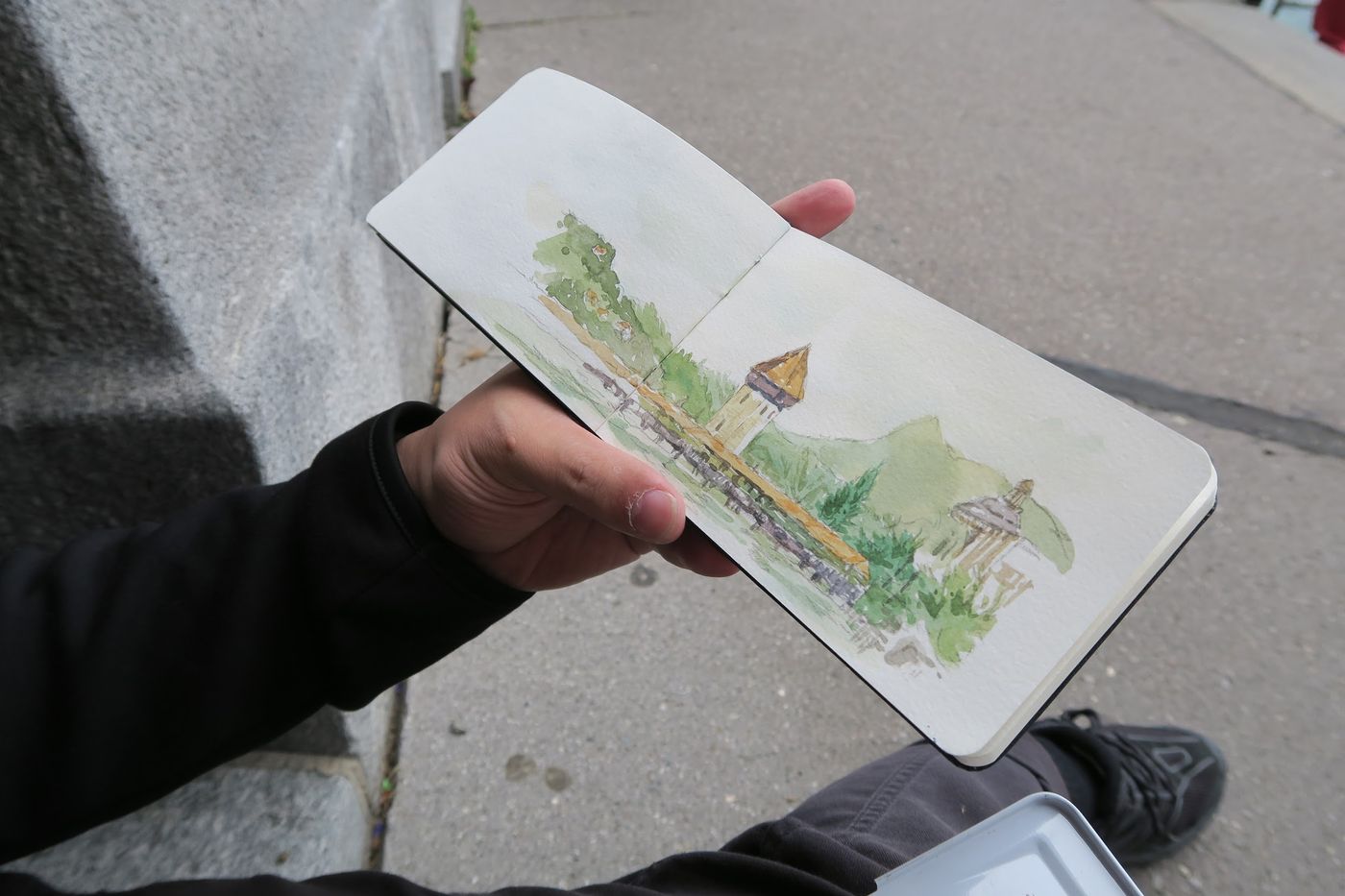
If Research is the encryption and sampling of "self-collection", then Memory is the encryption and sampling of "self-cultivation". The former is oriental in style and freehand, while the latter is closer to the West. The two are an iterative relationship.
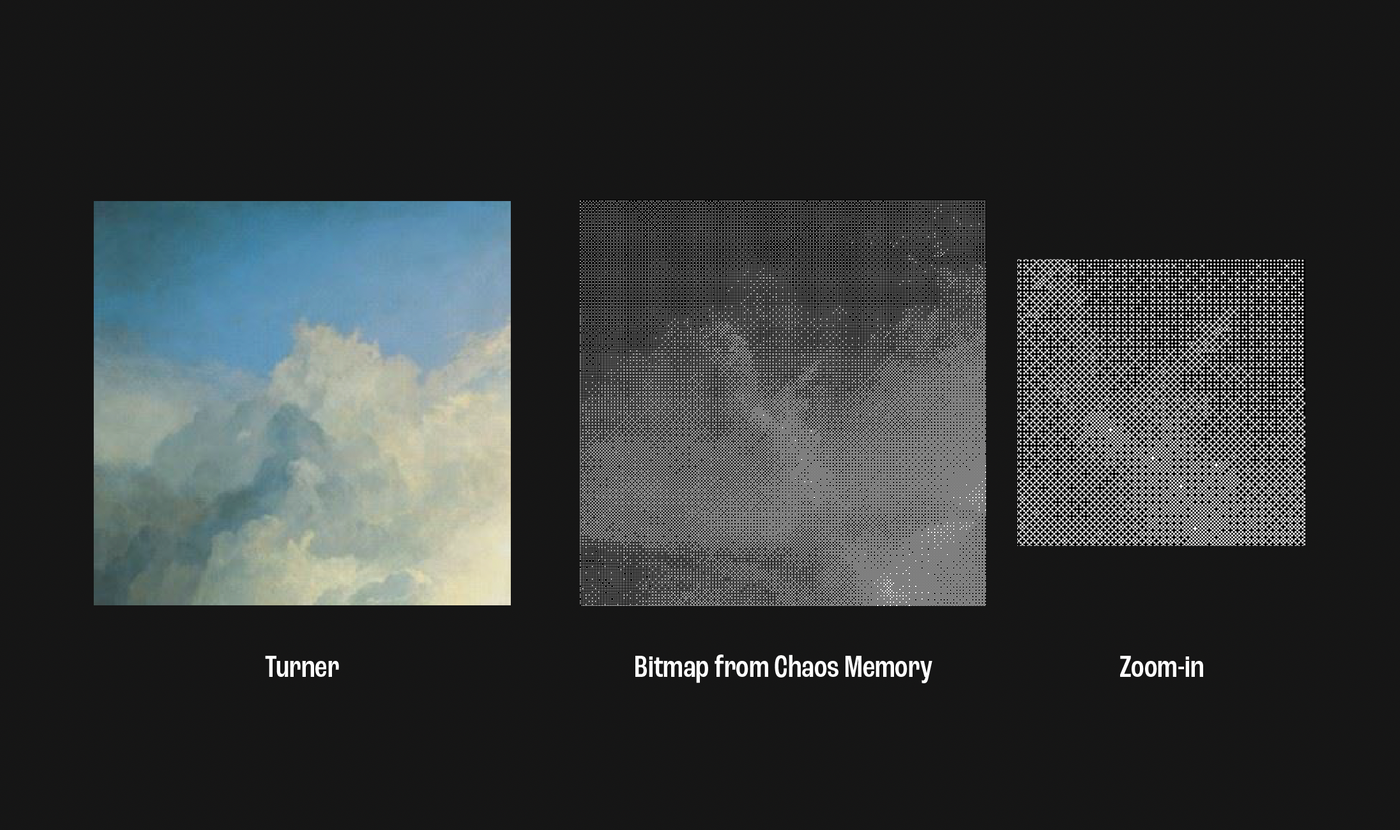
Now Art Basel is publishing the last work, Chaos Culture, which can also be found in the hosted archives. Culture resamples the contents of Research and Memory to produce circular works with higher picture integrity. Research produces memory, and memory produces culture. Culture also means a petri dish. Chaos Culture seems to be waiting for uncontrollable accidents outside of "controllable randomness", creating unpredictable results unique to generative art. Culture is like a contour map and an overhead satellite map, which may be able to deduct the diverse ecology of Oherbe’s fantasy topography and the encrypted landscape creation of Aran, or it may be a brand-new Flow Field, full of life traces , from the era of encryption art to this new era.
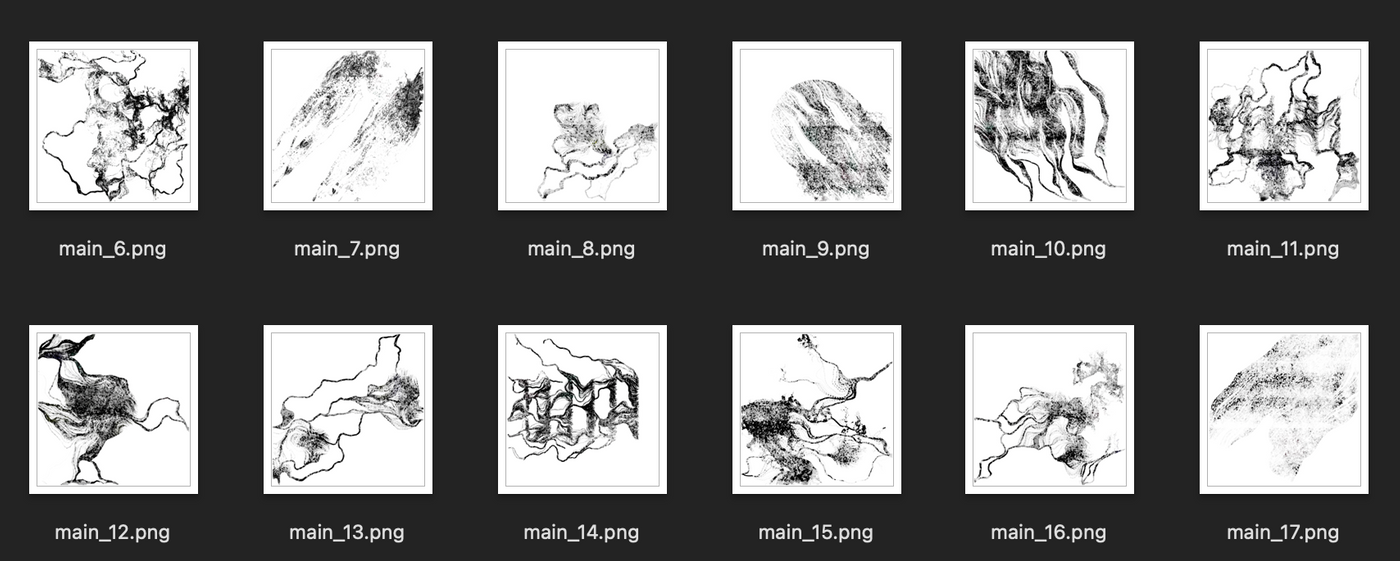
But in summary, after all, it is the process of noise sampling and encryption and decryption, which gave birth to the amazing three-act drama Wang Aran.
Aran always emphasizes that all creative processes cannot be far from the direction of belief, and that a great director will only talk about one thing in his life. For me, Aran's discussion of symbols and passwords has become a very suitable creative medium because of the emergence of encrypted art, including discussions on social politics, personal experience, and collection tastes. This may be a discussion on the reflexivity of encrypted art. good opportunity. I may have only deciphered less than half of the secrets of the Chaos series.
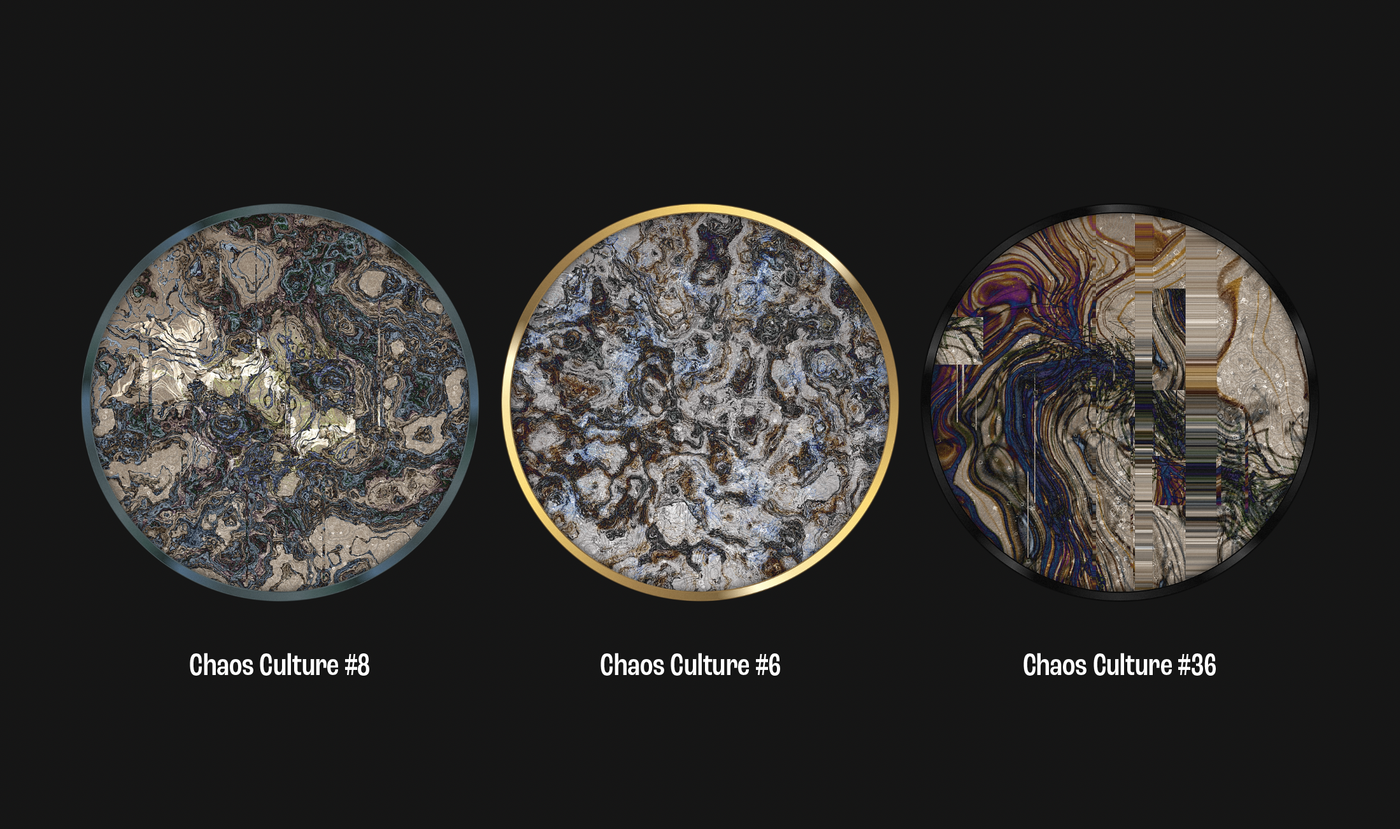
In addition to continuous creation, Wang Aran also operates the Asian Tezos NFT platform AkaSwap, which has also developed a market with different aesthetic styles from Europe and America. This is a very special and necessary item for the Tezos art world. thing. And because of AkaSwap, DAOs based on Tezos have also been born in Taiwan, such as FAB DAO (Formosa Art Bank) and Volume DAO.
The web3 world can produce diverse attempts because of decentralization/multi-centralization. Wang Aran was born in Taiwan, a politically turbulent island, as if the T of fantasy topography has a side story. Its past encryption art such as GeoPunk, and now generative art such as Chaos series, are smuggling in reflecting the cryptic manifesto. It also happens to be encryption art, which happens to be the most suitable stage for Wang Aran to develop.
Ahran is not only doing encryption art, but also uses the concept of encryption itself, and also implements his own social manifesto.
Encrypted art or generative art is iterating its own tastes. This is a market that is mixed with Western aesthetics, Eastern imagination, memes, free and open spirit, and rebelliousness. It is difficult to discuss it with the existing context. Taking Aran as an example, this kind of obscure encryption and sampling principle needs to start from the understanding of production technology (what is blockchain, what is decentralized hosting, and what is Perlin Flow Field), and then peel off layers by layer to find out what belongs to. The core of the artist's creation. I'm sure crypto art pioneer Kevin Abosch can understand the romance.
Chaos' encrypted three-act drama has ended, let us continue to look forward to the birth of Wang Xinren's next three-act drama, which may also be related to the essence of encrypted art.
Thanks to artist Wang Xinren for providing information.
Like my work? Don't forget to support and clap, let me know that you are with me on the road of creation. Keep this enthusiasm together!










- Author
- More